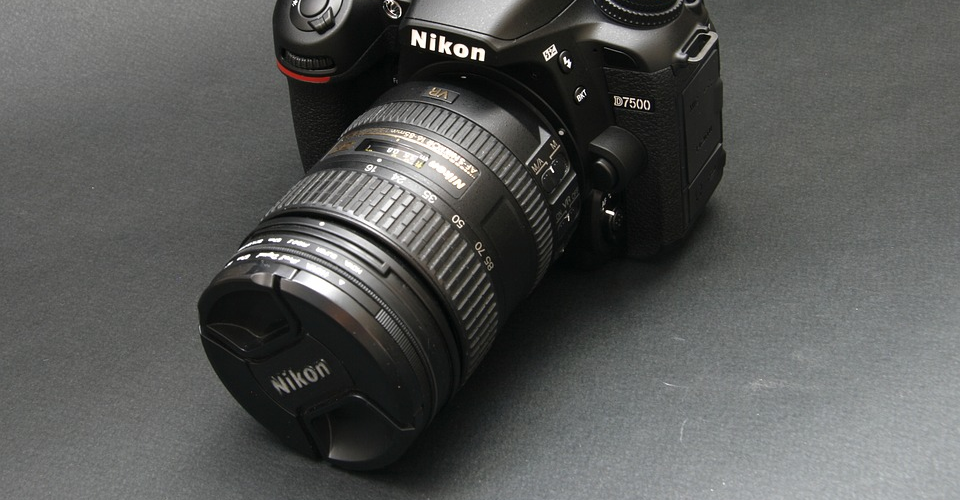6 Best Nikon D7500 Lenses in 2020
The D7500 is one of the most well-rounded cameras Nikon has ever produced. It’s rugged and works under challenging weather conditions, has excellent burst speeds, and focuses with ease even under difficult light. It’s no slouch on the video front either, thanks to 4K and a tilting screen. The only thing that’s lacking is a lens with a quality to match, and that’s what this article will help you find!
Below are the six best Nikon D7500 lenses on the market. We made sure to include models aimed at different types of photographers to make the choice as easy as possible. You’re sure to find the right one among them whether you’re looking for an affordable kit lens upgrade or some pro-level glass.
| Budget |
|---|
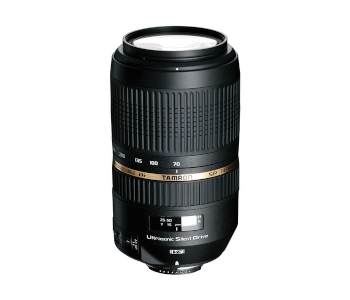 |
| Tamron SP 70-300mm f/4-5.6 Di VC USD |
| 4.2/5.0 |
| Type: Telephoto zoom |
| Image stabilization: Yes |
| Minimal vignetting and distortion. |
| Check B&H |
| Best Value |
|---|
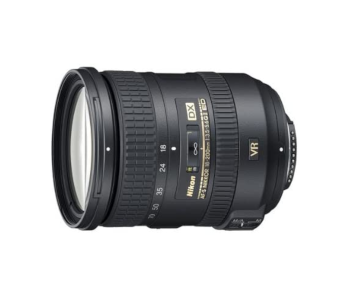 |
| Nikon AF-S DX NIKKOR 18-200mm f/3.5-5.6G ED VR II |
| 4.4/5.0 |
| Type: All-in-one zoom |
| Image stabilization: Yes |
| Responsive and accurate autofocus. |
| Check B&H |
| Top Pick |
|---|
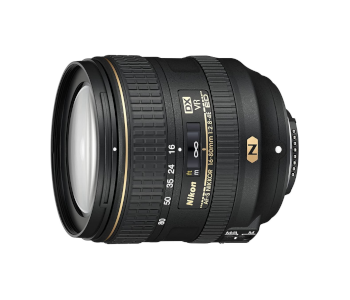 |
| Nikon AF-S DX NIKKOR 16-80mm f/2.8-4E ED VR |
| 4.6/5.0 |
| Type: Standard zoom |
| Image stabilization: Yes |
| Solid build quality and optical enhancements. |
| Check Amazon |
Nikon D7500 Lenses Comparison Table
| Image | Product | Overall Rating | Image quality | Versatility | Features | Price |
|---|---|---|---|---|---|---|
 | Nikon AF-S DX NIKKOR 16-80mm f/2.8- 4E ED VR | 4.6 | 4.6 | 4.7 | 4.5 | Check Price |
 | Nikon AF-S DX NIKKOR 18-200mm f/3.5- 5.6G ED VR II | 4.4 | 4.3 | 4.7 | 4.3 | Check Price |
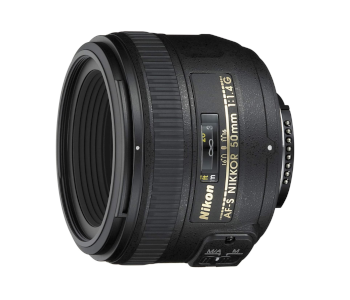 | Nikon AF-S FX NIKKOR 50mm f/1.4G | 4.5 | 4.6 | 4.4 | 4.4 | Check Price |
 | Nikon AF-S DX NIKKOR 10-24mm f/3.5- 4.5G ED | 4.4 | 4.4 | 4.5 | 4.3 | Check Price |
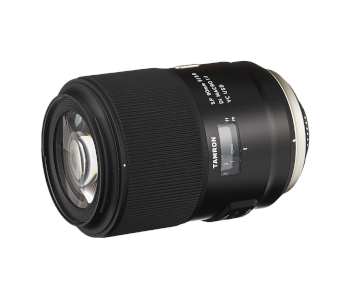 | Tamron SP 90mm f/2.8 Di Macro | 4.5 | 4.7 | 4.4 | 4.5 | Check Price |
 | Tamron SP 70-300mm f/4-5.6 Di VC USD | 4.2 | 4.0 | 4.6 | 4.2 | Check Price |
1. Best Overall – Nikon AF-S DX NIKKOR 16-80mm f/2.8-4E ED VR
Editor’s Rating: 4.6/5
Are you an outdoor or product photographer with an interest in portraiture? In that case, you’ll love the 16-80mm f/2.8-4E ED VR, a standard zoom lens from Nikon’s acclaimed Nikkor line. It blends portability with image quality and dependable image stabilization to produce stellar pics without the need for a tripod. It doesn’t come cheap, but you won’t regret getting it as soon as you take the lens and your D7500 out into the world.
Overview of Features
The 16-80mm f/2.8-4E ED VR is a lightweight lens made from plastic. It’s also a Nikkor model, so construction is tight and doesn’t feel cheap. Its balance on the D7500 Is excellent, although users with large hands might find the space between it and the handgrip somewhat cramped. The lens is outfitted with a slew of Nikon’s high-end augments like fluorine coating that combats smudges and dispersion glass that counters flares.
A Silent Wave Motor is at the heart of the 16-80mm f/2.8-4E ED VR’s focusing mechanism. This is a lens intended for stationary subjects, so slower AF response times are to be expected. Thankfully, accuracy doesn’t suffer in low light. Image stabilization is another boon as it lets you use the lens handheld while setting the shutter speed at four stops slower than usual. The benefit? Even better low-light performance and clean images despite handholding.
The 16-80mm f/2.8-4E ED VR is a sharp lens when wide open, with outstanding central clarity and corners that almost match it. Overall performance improves steadily as you narrow the aperture and plateaus between f/5.6 and f/8. Zooming in sees a slight decline in sharpness, mostly evident in a resolution drop in the corners. These never become soft, though.
You’ll see a few lens flares if you use the 16-80mm f/2.8-4E ED VR in direct sunlight. These are artful more than anything, especially if you step down to f/16 or beyond to get the sun star effect. Parts of the image that are out of focus appear smooth, and there’s little chromatic aberration.
What We Didn’t Like
The 16-80mm f/2.8-4E ED VR shows pronounced barrel distortion at 18mm and shouldn’t be used to capture straight lines or buildings at this focal length. It also has a strong vignette at 80mm you can improve by switching to f/8 or using Lightroom.
| Tech Specs |
|---|
| Dimensions: 3.2 x 3.2 x 3.4” |
| Weight: 16.9 oz. |
| Type: Standard zoom |
| Minimum focal length: 16mm |
| Maximum focal length: 80mm |
| Maximum aperture: f/2.8 to 4 |
| Minimum aperture: f/22 to 32 |
| Minimum focus distance: 1.2‘ |
| Angle of view: 83° to 20° |
| Image stabilization: Yes |
| Pros |
|---|
| Excellent for travel, landscape, and portrait photography |
| Maintains great sharpness throughout the focal range |
| Solid build quality and optical enhancements |
| Few flaring and CA issues |
| Cons |
|---|
| Noticeable barrel distortion at 18mm |
| Pronounced vignetting at 80mm |
2. Best Value – Nikon AF-S DX NIKKOR 18-200mm f/3.5-5.6G ED VR II
Editor’s Rating: 4.4/5
Don’t have much money left over after having bought the D7500? Then the 18-200mm f/3.5-5.6G ED VR II is your best choice as it’s a single lens that covers the entire zoom range you’re ever likely to use. Architecture, food, portraits, and sports are all within reach and can be shot handheld thanks to superb image stabilization. It’s two or three lenses rolled into one with a slight performance penalty that doesn’t impact its overall worth.
Overview of Features
The 18-200mm f/3.5-5.6G ED VR II is a light and compact lens considering its wide focal length that won’t make your D7500 front-heavy. You’d think that 16 elements in 12 groups would make for a beefier lens, but the complex glass is kept in check by a polycarbonate body. Switches for manual and automatic focusing, vibration reduction, and locking the zoom at 18mm are accessible from the lens’s side and easy to activate. You’ll want to engage the lock during transport or when using a tripod as the lens is prone to zoom creep.
The focus ring is thin and located in front of the 18-200mm f/3.5-5.6G ED VR II’s metal mount. It’s thinner than the zoom ring but works smoothly and allows for minute adjustments if autofocusing doesn’t go as planned. That shouldn’t be a frequent occurrence since the motor driving it is silent and accurate. The lens also sports the second generation of Vibration reduction, which uses two gyroscopes to introduce an effective four stops of stabilization.
The 18-200mm f/3.5-5.6G ED VR II is at its best at 18mm, where it achieves peak sharpness at f/4. Corners and edges aren’t as crisp but they’re by no means soft. Switch to f/8 or f/11 at this focal length for the most uniform results. Uniformity remains the lens’s theme once you zoom in as central sharpness declines while the corners take less of a dip. The trend continues throughout its zoom range.
We were pleased by the minuscule amount of chromatic aberration the 18-200mm f/3.5-5.6G ED VR II shows. It’s also a strong performer when it comes to light falloff since there’s barely any if you step down a notch. Bokeh is pleasant for the narrow apertures at your disposal, as is the transition smoothness of blurry backgrounds.
What’s Bad About It?
The 18-200mm f/3.5-5.6G ED VR II shifts from noticeable barrel distortion at its wide-angle end to moderate pincushion distortion once you pass 70mm. Correcting for either is straightforward if you use Lightroom and even easier for the D7500 to handle if you’re shooting JPEG. There’s noticeable focus breathing at 200mm, so figure out which aperture works best for the shot before getting it into focus.
| Tech Specs |
|---|
| Dimensions: 3 x 3 x 3.8” |
| Weight: 1.2 lbs. |
| Type: All-in-one zoom |
| Minimum focal length: 18mm |
| Maximum focal length: 200mm |
| Maximum aperture: f/3.5 to 5.6 |
| Minimum aperture: f/22 |
| Minimum focus distance: 1.6 ft. |
| Angle of view: 76° to 8° |
| Image stabilization: Yes |
| Pros |
|---|
| Excellent value for the money |
| Sharp for a lens with such a wide focal range |
| Responsive and accurate autofocus |
| Almost no vignetting |
| Cons |
|---|
| Noticeable barrel and pincushion distortion |
| Prone to focus breathing at 200mm |
3. Nikon AF-S FX NIKKOR 50mm f/1.4G
Editor’s Rating: 4.5/5
A bright portrait lens is your goto option if you’re after creamy bokeh, and the 50mm f/1.4G certainly delivers. Its focal length translates to 75mm in APS-C terms, meaning the lens is well suited for portraits, food, or cropped landscapes that focus on a single prominent feature. The lens performs well in low light and is among the quietest specimens on review.
Overview of Features
The 50mm f/1.4G is a compact and lightweight standard prime you’ll barely notice. It can afford to be so small since it doesn’t zoom and can achieve commendable results with just eight glass elements in seven groups. A single switch toggles between manual and autofocus modes with manual override. A window shows the current focusing distance in feet and meters. The lens has a metal mount and rubber ring that prevents dust from getting inside it and damaging either the lens or your D7500.
Autofocus on the 50mm f/1.4G is silent and accurate, but it’s not fast. That’s not to say it can’t keep up with sudden movements; it’s just not suited for the kind of split-second shots you’d entrust to a sports or wildlife lens. Focus tracking works flawlessly, and the wide aperture helps maintain image quality during indoor shoots. Wedding and event photographers will love it!
Sharpness is a mixed bag with the 50mm f/1.4G. Things start shakily since its central sharpness isn’t great, and the corners are soft when wide open. However, things take a drastic turn for the better at f/2.8 and continue to improve until f/8. The resolution spikes most in the center, which isn’t surprising if you consider the lens’s intended use. Images start to look uniform at f/11 and look well even at f/16.
Bokeh quality is the best thing about the 50mm f/1.4G. It has nine rounded blades that make for even and rounded highlights at apertures where lesser lenses would start to include visible angles. Lateral chromatic aberration never exceeds three-fourths of a pixel, and the longitudinal kind isn’t a problem either.
The front-most glass element is more recessed on this than on older Nikon lenses, resulting in minimal veiling flare. Vignetting is concerning if you pair it with full-frame cameras, but correcting it on the D7500 is a matter of stepping down to f/1.8.
Are There Drawbacks?
The 50mm f/1.4G exhibits close to two percent barrel distortion. That’s a moderate amount for zoom lenses but a poor result for a standard prime. Fortunately, it’s an easy issue to fix.
| Tech Specs |
|---|
| Dimensions: 2.9 x 2.9 x 2.1” |
| Weight: 9.9 oz. |
| Type: Standard prime |
| Focal length: 50mm |
| Maximum aperture: f/1.4 |
| Minimum aperture: f/16 |
| Minimum focus distance: 1.6 ft. |
| Angle of view: 46° |
| Image stabilization: No |
| Pros |
|---|
| Can achieve shallow depth of field and beautiful bokeh |
| Built well yet portable |
| Great low-light performance |
| Negligible vignetting when mounted on the D7500 |
| Cons |
|---|
| Strong barrel distortion for a standard prime |
| Slow autofocus |
4. Nikon AF-S DX NIKKOR 10-24mm f/3.5-4.5G ED
Editor’s Rating: 4.4/5
The 10-24mm f/3.5-4.5G ED is a versatile zoom lens since its focal length is 15-36mm in full-frame terms. It’s dipping into ultra-wide territory, meaning you can use it for sprawling landscapes or real-estate photos that capture the entirety of a closed space. It’s built with Nikon’s customary attention to detail, performs quickly, and has few issues you couldn’t take care of in post.
Overview of Features
The lens is tailor-made for the D7500 as it’s neither front-heavy nor so wide that you couldn’t grab the camera comfortably. It extends when you zoom in but doesn’t rotate while focusing, which is great for attaching polarizers or ND filters. The body is made from quality polycarbonate, while the rubberized mount is metal. The zoom ring is wide and knurled, so rotating it with gloves won’t be a problem.
We found that the 10-24mm f/3.5-4.5G ED focuses accurately at a decent pace. It’s among the quietest lenses on review and suitable for establishing shots or footage of imposing buildings like cathedrals. You can improve the lens’s accuracy by overriding the autofocus at any time with the thin manual focus ring. Image stabilization is absent, but that’s not surprising for wide-angle lenses.
The 10-24mm f/3.5-4.5G ED’s sharpness tells a story of contrasts. On the one hand, its center is remarkably sharp, no matter what you do to the aperture or focal length. On the other, edges are disappointingly soft when wide open and barely improve at a given focal length’s max aperture. You’ll want to stick to f/8 at 17mm for the best results since the lens is at its sharpest and most uniform there.
Direct sunlight doesn’t bother the 10-24mm f/3.5-4.5G ED as loss of contrast and ghosting are minimal. You’ll notice some light falloff at 10mm f/3.5 and can get rid of it by adjusting either parameter. Bokeh is attractive for a lens where it isn’t a priority, as is the background blur you can introduce if you want a shallow depth of field.
Are There Drawbacks?
The 10-24mm f/3.5-4.5G ED shows pronounced barrel distortion at 10mm that gives way to some pincushion distortion once you’re past 17mm. Some chromatic aberration is visible towards the edges at wide apertures.
| Tech Specs |
|---|
| Dimensions: 3.3 x 3.3 x 3.4” |
| Weight: 1 lbs. |
| Type: Wide-angle zoom |
| Minimum focal length: 10mm |
| Maximum focal length: 24mm |
| Maximum aperture: f/3.5 to 4.5 |
| Minimum aperture: f/22 |
| Minimum focus distance: 9.5” |
| Angle of view: 109° to 61° |
| Image stabilization: No |
| Pros |
|---|
| Decent build quality |
| Autofocus is fast and silent |
| Great central sharpness |
| Nice bokeh for a wide-angle zoom |
| Cons |
|---|
| Soft corners at 10mm f/3.5 |
| Pronounced barrel distortion at 10mm |
5. Tamron SP 90mm f/2.8 Di Macro
Editor’s Rating: 4.5/5
Nikon makes outstanding lenses for most photography types, but Tamron’s SP 90mm f/2.8 Di Macro is the undisputed winner when it comes to macro photography with the D7500. It sports fantastic build quality, sharpness that borders on unreal, and image stabilization that makes shooting small things without a tripod practical.
Overview of Features
Tamron went all out with the SP 90mm f/2.8 Di Macro’s design, as signaled with the silver ring of excellence on its otherwise all-black metal body. The build quality is superb, and you can use the lens in inclement weather since it is weather-sealed. There’s fluorine coating for smudge protection along with eBAND & BRAR coatings for extra flare resistance. The lens comes with a hood and has a 62mm filter for polarizers.
Autofocus works through an Ultrasonic Silent Drive. Its name describes the performance accurately since the motor is indeed silent and won’t startle your living subjects. It’s accurate, too, but not the fastest we’ve seen. You can speed things up by engaging the three-stage focus limiter and set it to 0.3 – 0.5m for the quickest results. Vibration Compensation improves your chances of getting usable low-light images and reduces handheld camera shake by 3.5 stops.
The SP 90mm f/2.8 Di Macro’s sharpness is exceptional. Shooting at f/2.8 results in tack-sharp pictures from corner to corner. The center gets even more defined at f/4 while the corners remain detailed. Dropping to f/5.6 matches the wide-open results, while diffraction becomes apparent at f/11. Anything less than f/16 is unusable due to softness.
There’s no distortion whatsoever, so feel free to use the SP 90mm f/2.8 Di Macro for architectural photography and when shooting cityscapes. The bokeh you get at wide apertures is creamy, and smooth out of focus backgrounds frame subjects nicely. Artifacts aren’t a problem, and neither is flaring.
What’s Bad About It?
Complaining about the SP 90mm f/2.8 Di Macro is essentially nitpicking. There’s some vignetting at f/2.8 you can leave in for artistic effect or eliminate by using f/4. This is another lens with some focus breathing issues, so settle on an aperture first before going for fine focus adjustments.
| Tech Specs |
|---|
| Dimensions: 3.1 x 3.1 4.9” |
| Weight: 1.3 lbs. |
| Type: Macro lens |
| Focal length: 90mm |
| Maximum aperture: f/2.8 |
| Minimum aperture: f/32 |
| Minimum focus distance: 11.8” |
| Angle of view: 27° 2′ |
| Image stabilization: Yes |
| Pros |
|---|
| Exceptionally sharp |
| Free from distortion |
| Excellent build quality |
| 1:1 magnification |
| Cons |
|---|
| Some focus breathing |
| Moderate vignetting at f/2.8 |
6. Best Budget Option – Tamron SP 70-300mm f/4-5.6 Di VC USD
Editor’s Rating: 4.2/5
A telephoto lens offers the most versatility as you can use it for portraits, travel shots, or close-ups of nature and sports. We’ve chosen the SP 70-300mm f/4-5.6 Di VC USD instead of a Nikon counterpart since it is affordable, well built, and will still be useful if you transition to a full-frame DSLR down the road. Its extreme telephoto end is too soft for our liking, but treating it as a 70-200mm equivalent yields excellent results.
Overview of Features
The SP 70-300mm f/4-5.6 Di VC USD is a long and heavy lens that doesn’t feel overbearing. It extends even more as you zoom in but doesn’t rotate during focus acquisition so that you can work with polarizers. It has wide focus and zoom rings with the right amount of resistance along with low and extra-low dispersion elements that improve image quality and reduce color fringing.
This is the first lens to use Tamron’s ring-type UltraSonic Drive, and it does so with great effect. Autofocus is both reliable and quick, snapping to unruly targets like birds or children in a flash and rarely losing sight of then. It’s quiet as well, so you can use the lens for documentaries and other videos. However, it’s not the best performer in low light due to increasingly narrower max apertures the more you zoom in, so shoot in daylight, or keep your subjects lit adequately.
Sharpness is solid at 70mm and follows a familiar pattern until you zoom in completely. The center is clear when the lens is wide open, while the corners are a step below in terms of resolution. Stepping down improves its performance, but the gap between corner and central sharpness remains intact. Zooming to 100mm incurs a slight sharpness penalty that persists through the 200-250mm range.
Pairing the SP 70-300mm f/4-5.6 Di VC USD with an APS-C camera like the D7500 results in minimal vignetting. Distortion ranges from minor barrel to insignificant pincushion as you increase the focal length, while chromatic aberration never becomes an issue. You can achieve smooth and blurry backgrounds, but bokeh is too nervous to be considered pretty. That’s to be expected for a lens with narrow max apertures, though.
What We Didn’t Like
The SP 70-300mm f/4-5.6 Di VC USD’s image quality drops significantly at 300mm. Luckily, that’s 480mm in full-frame terms and has a minimal impact on the lens’s ability to clearly capture far-away subjects. You’ll want to use the long reversible hood and avoid shooting into the sun since flares and artifacts can be problematic.
| Tech Specs |
|---|
| Dimensions: 3.2 x 3.2 x 5.9” |
| Weight: 1.7 lbs. |
| Type: Telephoto zoom |
| Minimum focal length: 70mm |
| Maximum focal length: 300mm |
| Maximum aperture: f/4 to 5.6 |
| Minimum aperture: f/32 to 45 |
| Minimum focus distance: 3.1 ft. |
| Angle of view: 34° to 8° |
| Image stabilization: Yes |
| Pros |
|---|
| Long zoom range |
| Effective image stabilization |
| Great build quality and handling despite its size |
| Minimal vignetting and distortion |
| Cons |
|---|
| Some trouble with flares |
| Soft at the extreme telephoto end |
Contents
- Nikon D7500 Lenses Comparison Table
- 1. Best Overall – Nikon AF-S DX NIKKOR 16-80mm f/2.8-4E ED VR
- Overview of Features
- What We Didn’t Like
- 2. Best Value – Nikon AF-S DX NIKKOR 18-200mm f/3.5-5.6G ED VR II
- Overview of Features
- What’s Bad About It?
- 3. Nikon AF-S FX NIKKOR 50mm f/1.4G
- Overview of Features
- Are There Drawbacks?
- 4. Nikon AF-S DX NIKKOR 10-24mm f/3.5-4.5G ED
- Overview of Features
- Are There Drawbacks?
- 5. Tamron SP 90mm f/2.8 Di Macro
- Overview of Features
- What’s Bad About It?
- 6. Best Budget Option – Tamron SP 70-300mm f/4-5.6 Di VC USD
- Overview of Features
- What We Didn’t Like

